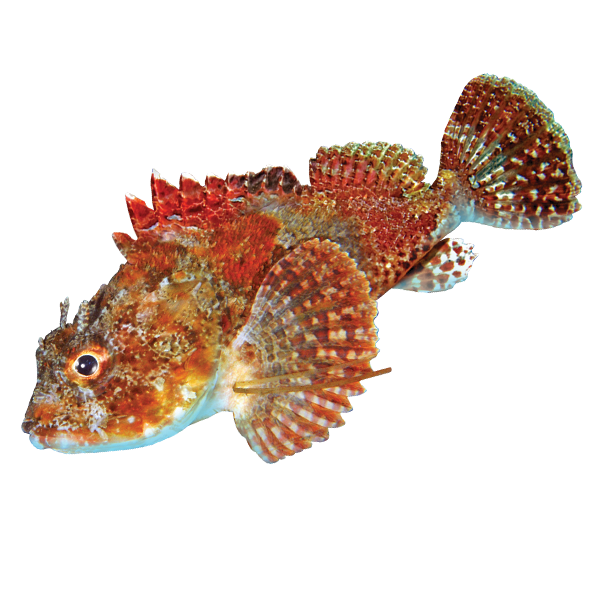Scorpaena plumieri
Spotted Scorpionfish
Maximum Size:
18 in (45 cm)
Longevity:
Around 15 years.
Typical depth:
3–197 ft (1–60 m)
Behavior:
The spotted scorpionfish spends much of its time lying motionless on the seabed, using camouflage to ambush fish and crustaceans. They have a large, expandable mouth capable of creating a vacuum to suck in prey, which they swallow whole.
Predators:
Large snapper, sharks, rays and moray eels.
Did you know?
The spotted scorpionfish has close to 50 documented common names. Confusingly, many of these common names are also shared by other species found in the same region, such as hind, lionfish and gurnard.
WARNING!
Scorpionfishes have a dozen venomous dorsal spines that they use for self-defense. The spines can penetrate skin (most commonly when stepped on), injecting a toxin that causes severe pain that can last from several hours to several days. The area around the injury may also swell and become red.
TREATMENT
Rinse the affected area with seawater. Remove any spines and use pressure to control any bleeding. Apply the hottest water you can stand, ideally around 113°F (45°C), to reduce the pain. Let the wound heal uncovered, but antibiotics may be required to avoid infection. The toxin can be painful, but it is not usually fatal. However, seek medical attention if concerned or if symptoms are worse than described.
MEDICAL DISCLAIMER
The treatment advice contained in this book is meant for informational purposes only and is not intended to be a substitute for professional medical advice, either in terms of diagnosis or treatment. Always seek the advice of your physician or other qualified health provider if you are injured by a marine organism. Never disregard professional medical advice or delay seeking it because of something you have read in this book.

